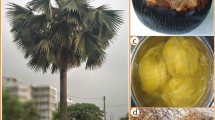Abstract
Nowadays, fibers extracted from natural resources have a wide range of promising applications, including the prospect to be used as reinforcing material in polymer composites. In this context, the purpose of this study has been to extract fibers from different parts of the olive tree (leaves, small and large branches) and characterize their physico-chemical, thermal, and morphological properties using advanced equipment. Olive leaf (OL) fiber showed asymmetrical size distribution, as compared to those extracted from small olive branches (OSS), and big olive branches (OBS). The OL fiber exhibited 64.1% crystallinity, which is lower than that of the OSS fiber—with 65.4% crystallinity. Thermal analysis revealed that the OBS and OSS fibers are more thermally stable, compared to the OL fibers. The obtained results concluded that olive tree fibers can be suitable for being used as reinforcement material to develop polymer composites for various lightweight applications.





Similar content being viewed by others
References
Alves C, Silva AJ, Reis LG, Freitas M, Rodrigues LB, Alves DE (2010) J Clean Prod 18:313–327
Sanjay MR, Siengchin S, Parameswaranpillai J, Jawaid M, Pruncu CI, Khan A (2018) Carbohydr Polym 207:108–121
Al-Oqla FM, Sapuan SM (2014) J Clean Prod 66:347–354
Razali N, Salit MS, Jawaid M, Ishak MR, Lazim Y (2015) BioRes 10(1):1803–1824
Manimaran P, Senthamaraikannan P, Sanjay MR, Marichelvam MK, Jawaid M (2018) Carbohydr Polym 181:650–658
Suhaily S, Jawaid M, Khalil HA, Mohamed AR, Ibrahim F (2012) BioResources 7(3):4400–4423
Sanjay MR, Madhu P, Jawaid M, Senthamaraikannan P, Senthil S, Pradeep S (2018) J Clean Prod 172:566–581
El-Mously H, Megahed M, Rakha M (1999) Sci Bull Fac Eng Ain Shams Univ 39(2):631–651
Guuntekin E, Uner B, Karakus B (2009) J Environ Biol 30(5):731–734
Nemli G, Kırcı H, Serdar B, Ay N (2003) Ind Crop Prod 17:39–46
Akgül M, Çamlibel O (2008) Build Environ 43(4):438–443
Anonymous (2004) Timber Committee Markets Forecasts
Hegazy SS, Aref IM (2010) For Prod J 60(7/8):599–604
El-Mously H, El-Morshedy MM, Megahed MM, Abd EH (1993) Proceedings of the 4th international conference on production engineering and design for development, Cairo, Egypt
Nemli G, Kalaycıoğlu H, Alp T (2001) Eur J Wood Wood Prod 59:411–412
Lin CJ, Hiziroglu S, Kan SM, Lai HW (2008) J Mater Process Technol 197:445–448
Jawaid M, Khalil HPSA, Bakar AA, Khanam PN (2011) Mater Des 32:1014–1019
Jawaid M, Swain SK (eds) (2018) Bionanocomposites for packaging applications. Springer, Cham
Nemli G, Nemli G, Demirel S, Gümüşkaya E, Aslan M, Acar C (2009) Waste Manag 29(3):1129–1131
Nasser RA (2012) World Appl Sci J 19(5):741–753
Nasser RA, Al-Mefarrej HA (2011) World Appl Sci J 15(12):1651–1658
El Atta HA, Aref I (2010) Int J Environ Sci Technol 7(1):59–66
Ye XP, Julson J, Kuo M, Womac A, Myers D (2007) Bioresour Technol 98(5):1077–1084
El Atta HA (2003) A report to the Ministry of Agriculture. The Saudi Ministry of Agriculture, Riyadh
El-Juhany LI, Aref IM, Al-Ghamdi MA (2008) Res J Agric Biol Sci 4(2):126–133
Nasser RA, Salem MZ, Al-Mefarrej HA, Aref IM (2016) Cem Concr Compos 72:246–256
Aref IM, El-Juhany LI, Hegazy SS (2003) J Arid Environ 54(4):783–792
Wang J, Hu Y (2016) Waste Biomass Valoriz 7:1447–1458
Nasser RA, Salem MZ, Hiziroglu S, Al-Mefarrej HA, Mohareb AS, Alam M, Aref IM (2016) Energies 9(5):374
Nasser RA, Al-Mefarrej HA, Abdel-Aal MA, Alshahrani TS (2014) J Environ Biol 35(5):961–971
Dermeche S, Nadour M, Larroche C, Moulti-Mati F, Michaud P (2013) Process Biochem 48(10):1532–1552
Galanakis CM (2011) Trends Food Sci Technol 22:175–184
Sesli M, Yegenoglu D (2009) Afr J Biotechnol 8(15):3419–3423
Niaounakis M, Halvadakis CP (2004) Olive mill waste management. Literature review and patent survey. Typothito-George Dardanos, Athens
Kartesz JT (2011) North American Plant Atlas. The Biota of North America Program, Chapel Hill
Mehri H, Alrowaili F, Awad A (2013) Proceedings of the international conference on agricultural technologies in arid lands, Riyadh, KSA
Al-Khalifah NS, Askari E, El-Kholy M (2012) Following olive footprints (Olea europaea L.)-cultivation and culture, folklore and history, tradition and uses. AARINENA, IOC and ISHS
Al Alarabiya (2018) News. http://english.alarabiya.net/en/business/economy/2018/05/03/Saudi-olive-tree-farm-sets-Guinness-Records-for-largest-in-the-world.html
Acknowledgements
Authors extend their appreciation to the International Scientific Partnership Program ISPP at King Saud University for funding this research work through ISPP-0011. We also thank King Abdulaziz City for Science and Technology (KACST) for the support.
Author information
Authors and Affiliations
Corresponding author
Additional information
Publisher's Note
Springer Nature remains neutral with regard to jurisdictional claims in published maps and institutional affiliations.
Rights and permissions
About this article
Cite this article
Alshammari, B.A., Alotaibi, M.D., Alothman, O.Y. et al. A New Study on Characterization and Properties of Natural Fibers Obtained from Olive Tree (Olea europaea L.) Residues. J Polym Environ 27, 2334–2340 (2019). https://doi.org/10.1007/s10924-019-01526-8
Published:
Issue Date:
DOI: https://doi.org/10.1007/s10924-019-01526-8




